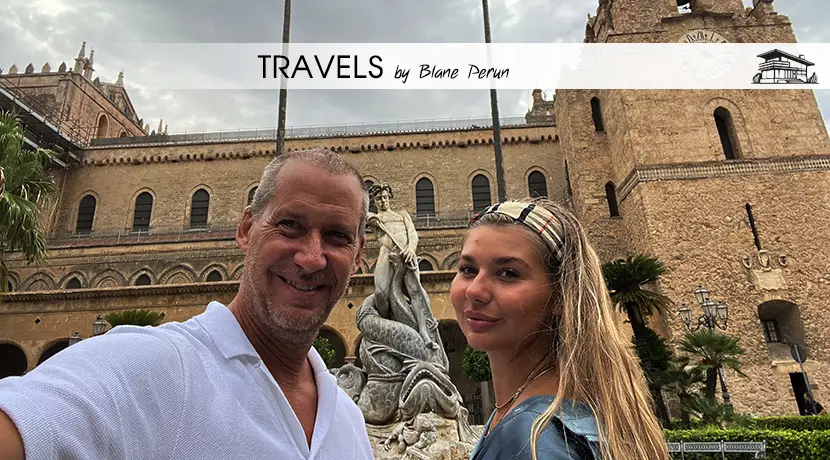Palermo Architecture & Interior Design
Unveiling the Splendor of Palermo: A Dive into Its Architectural Genius
Nestled in the heart of the Mediterranean, Palermo, the capital of Sicily, is a city where every street, building, and square tells a story of centuries-old civilizations, cultures, and artistic endeavors. The architecture and design of Palermo, Italy, stand as a testament to the city’s rich historical tapestry, woven with the threads of Byzantine, Arab, Norman, Renaissance, and Baroque influences. This intricate mosaic of styles creates a unique urban landscape that continues to enchant visitors and design aficionados alike. Palermo Italy Architecture & Design is not just about the aesthetic appeal but also about the narratives, the cultural confluences, and the ingenious urban planning that has shaped this city through the ages.

The Heartbeat of History: Palermo’s Architectural Timeline
Ancient Foundations: Palermo’s Greek and Roman Legacy
Delving into Palermo’s ancient roots reveals a city that has been a crossroads of civilizations. The remnants of Greek and Roman architecture, though scarce, provide a glimpse into the early days of Palermo’s urban fabric. The city’s layout, the agora-like squares, and the Roman engineering principles evident in the old city’s infrastructure underscore the classical influence on Palermo’s early urban development.
The Norman Conquest: A Fusion of Cultures in Stone
The Norman period marks a significant epoch in Palermo’s architectural heritage. The Normans, led by Roger II, brought a synthesis of Romanesque, Byzantine, and Arab architectural styles, giving rise to structures like the Palazzo dei Normanni and the Cappella Palatina. These buildings are characterized by their ornate mosaics, intricate arabesques, and robust fortifications, reflecting the cultural melting pot that Palermo had become.
The Artistic Flourish: Renaissance and Baroque Brilliance
Renaissance Rebirth: Palermo’s Brush with Humanism
The Renaissance brought a new wave of artistic and architectural innovation to Palermo. Buildings from this period, such as the Palazzo Abatellis, showcase the Renaissance’s emphasis on symmetry, proportion, and the use of classical elements. This era marked a shift towards a more human-centric approach to architecture, with designs that prioritized natural light, spacious interiors, and harmony with the surrounding environment.
The Baroque Spectacle: Palermo’s Theatrical Elegance
Baroque architecture in Palermo is a feast for the senses, characterized by its dramatic use of light and shadow, sweeping curves, and elaborate decorative elements. Churches like San Domenico and San Giuseppe dei Teatini stand as iconic examples of Baroque’s ability to evoke emotion and convey the grandeur of the divine through architectural design.
Modern Movements: Palermo’s Contemporary Canvas
The Liberty Style: Palermo’s Art Nouveau Wave
At the turn of the 20th century, Palermo embraced the Art Nouveau movement, known locally as Stile Liberty. This era brought a fresh aesthetic to the city’s landscape, with buildings like the Villino Florio and the Teatro Massimo showcasing organic motifs, flowing lines, and a harmonious blend of art and architecture. The Liberty style in Palermo is a reflection of the city’s continuous evolution, incorporating modernity while respecting its historical context.
Palermo Today: A City in Constant Conversation with Its Past
In contemporary times, Palermo continues to be a vibrant canvas for architectural and urban experimentation. The city’s approach to new buildings and urban spaces is marked by a respectful dialogue with its past, integrating modern design principles while preserving and revitalizing its historical legacy. Projects like the renewal of the historic La Kalsa district embody this forward-looking yet heritage-conscious approach.
In conclusion, Palermo Italy Architecture & Design is a multifaceted journey through time, where each era contributes its own chapter to the city’s ongoing narrative. From ancient ruins to Baroque churches and modernist designs, Palermo’s architecture is a testament to the city’s resilience, creativity, and cultural richness. As we walk through its streets, we are not just observers of beauty but participants in a history that continues to unfold in stone, mortar, and imagination.

FAQs on Palermo Italy Architecture & Design
What makes Palermo’s architecture unique?
Palermo’s architectural uniqueness lies in its eclectic mix of styles, from Greek and Roman to Norman, Renaissance, Baroque, and Art Nouveau. This diversity reflects the city’s rich history of conquests, cultural exchanges, and artistic innovation, creating a distinctive urban landscape that tells the story of centuries of civilization.
How has Palermo’s history influenced its architecture?
Palermo’s architecture is a direct reflection of its layered history. Each ruling era, from the ancient Greeks and Romans to the Normans, Arabs, and Spanish, left its mark on the city’s design and urban planning. These influences have melded together, creating a unique architectural tapestry that showcases Palermo’s historical significance and cultural richness.
Can you see the influence of different cultures in Palermo’s architecture?
Absolutely. The influence of different cultures in Palermo’s architecture is evident in the city’s varied architectural styles. For example, the Arab-Norman style, as seen in the Palazzo dei Normanni, combines Norman, Byzantine, and Islamic elements, while the Baroque churches display the extravagant aesthetics brought by the Spanish rule. This blend of cultural influences makes Palermo’s architecture truly unique.
What are some must-see architectural landmarks in Palermo?
Must-see architectural landmarks in Palermo include the Palazzo dei Normanni, the Cappella Palatina with its stunning mosaics, the Cathedral of Palermo, and the Teatro Massimo. Each of these landmarks offers a glimpse into different periods of Palermo’s architectural history, from the Norman conquest to the elegance of the 19th century.
How is contemporary architecture integrated into Palermo’s historic fabric?
Contemporary architecture in Palermo is carefully integrated into the city’s historic fabric through adaptive reuse of old buildings, respectful urban renewal projects, and innovative designs that dialogue with historical contexts. Modern interventions are designed to complement the city’s heritage, ensuring that Palermo’s architectural narrative continues to evolve while honoring its past.





